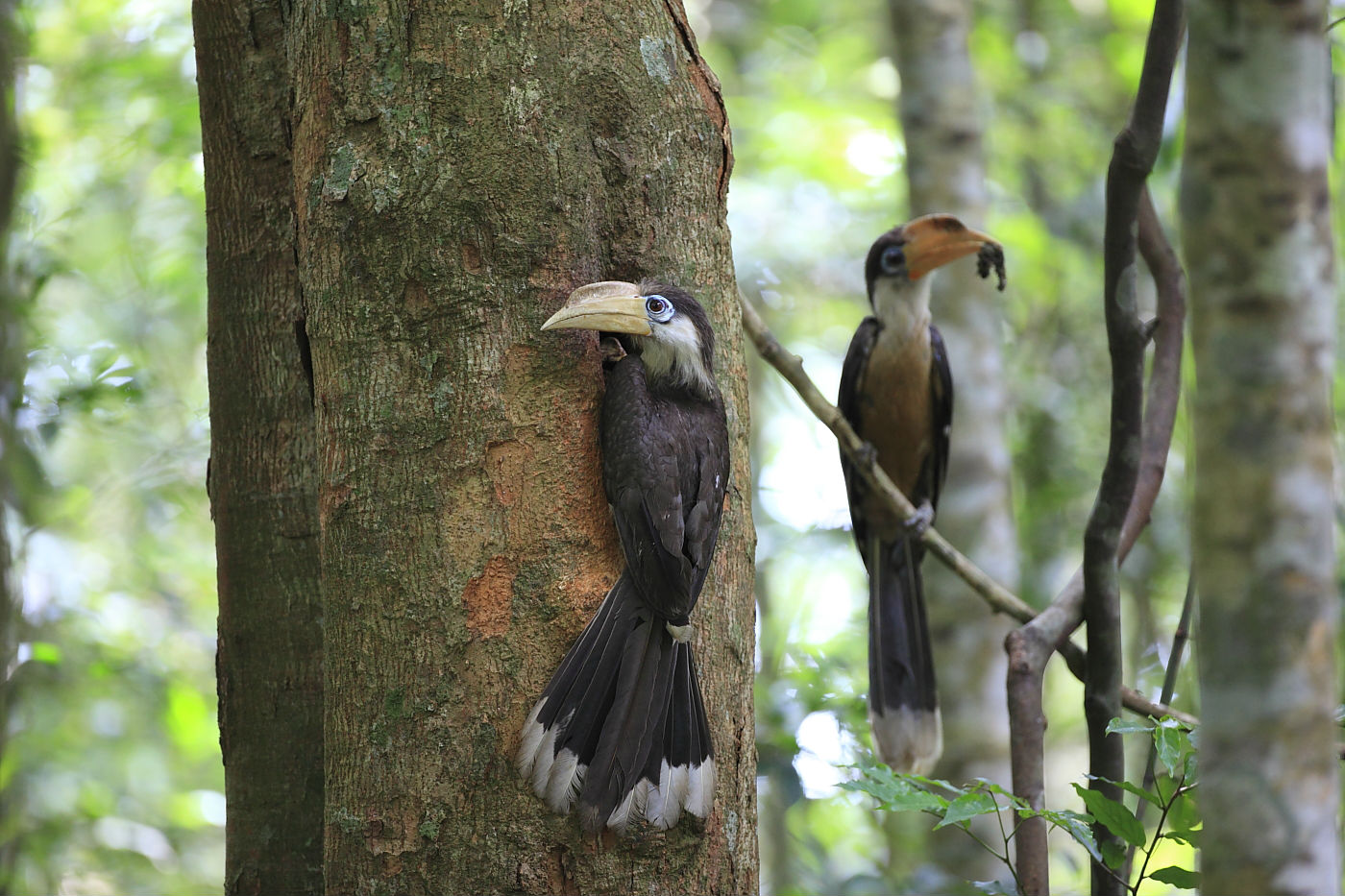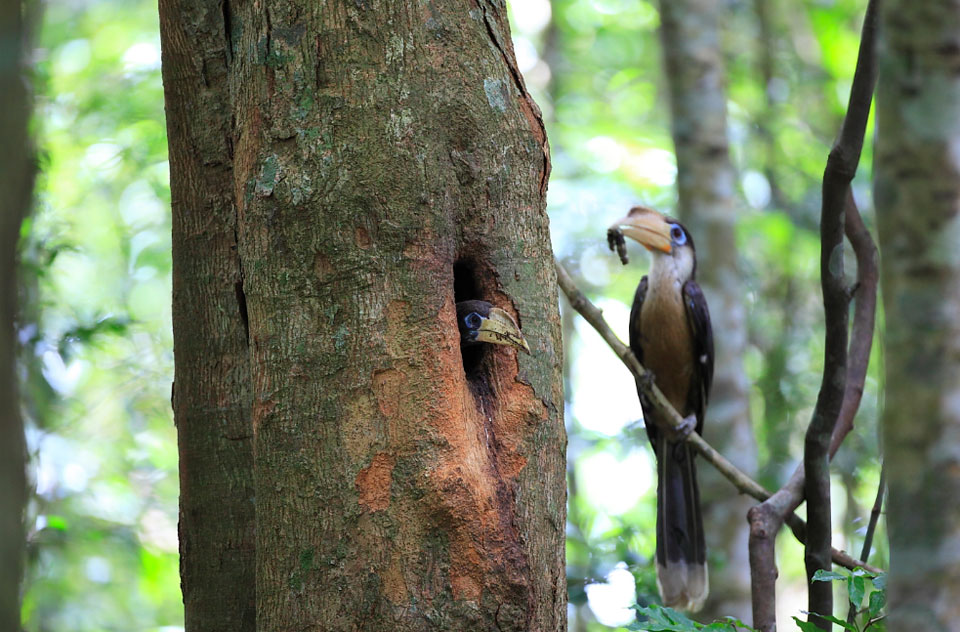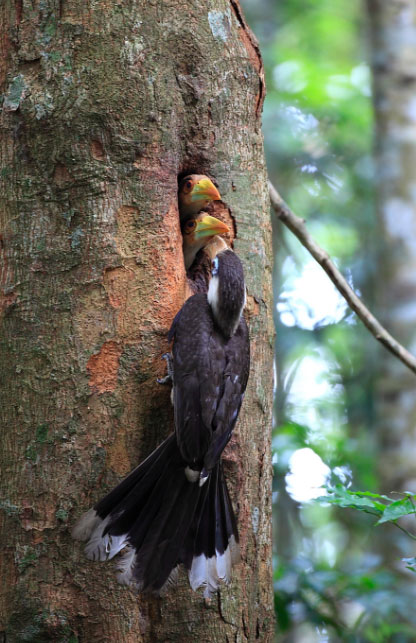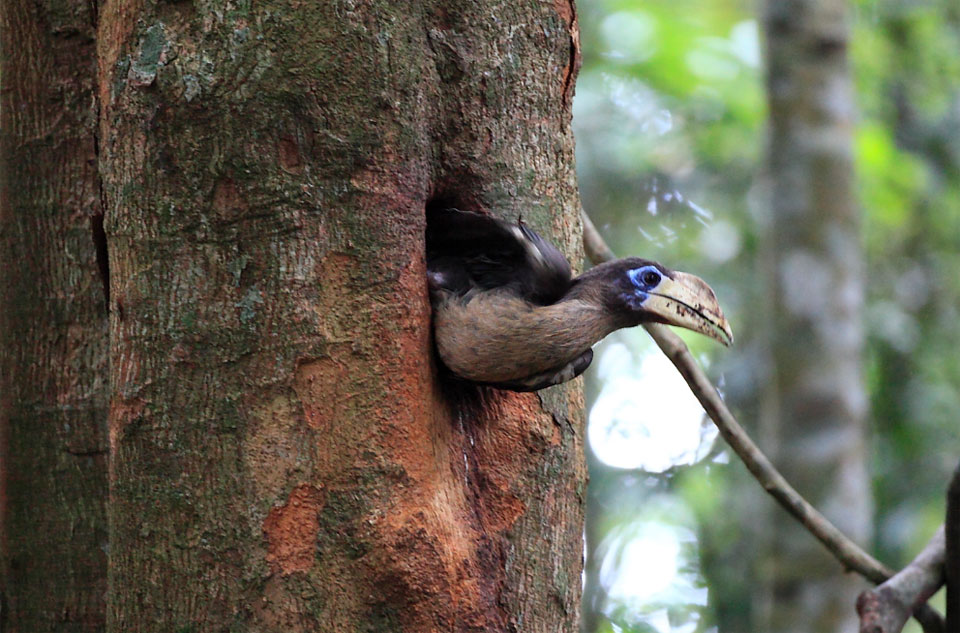Found in closed forest, both evergreen and deciduous, from the lowlands to the lower montane forest with pines and oaks,mainly in lower hills, It is recorded to 1,000 m elevation in India, 1,500 m in South-east Asia and 1,800 in Tibet and Yunnan province, China.
It is a social bird that lives in vocal and mobile group of 2-15 birds, up to 50 in one group have been reported. It moves through the forest at canopy level and feeds actively inside or just below the canopy.
The food in mainly fruits, 41 different varieties have been identified at Khao Yai NP. During a breeding survey in Thailand, recorded food by weight was 22% figs, 38% other fruits and 40% animals. It consumes animal prey as many as 41 species.
Prey included many arthropods, but also snails, earthworms and such vertebrate prey as bats, snakes, lizards and bird chicks and eggs. Sedentary and territorial, the mean home range of a breeding group in only 4.3-5.9 sq. km; there are no reports of movements apart from immatures dispersing.
In non-breeding season a number of up to 80 birds can be seen roosting together in Khao Yai NP.



